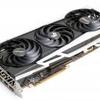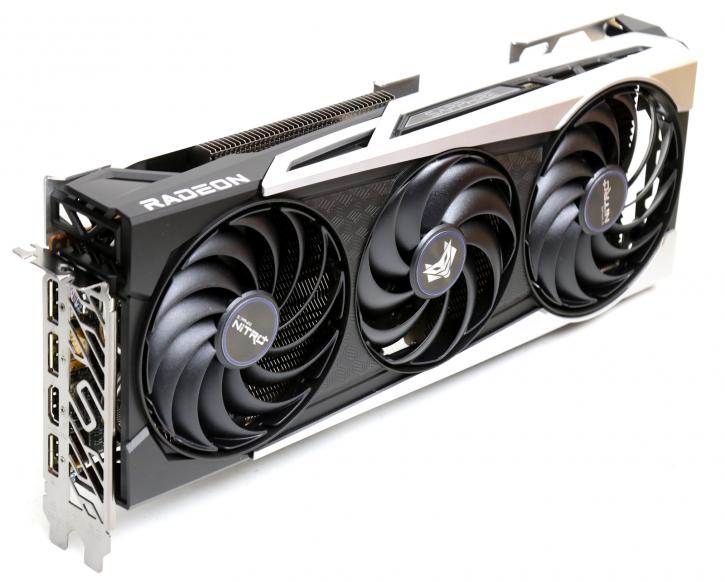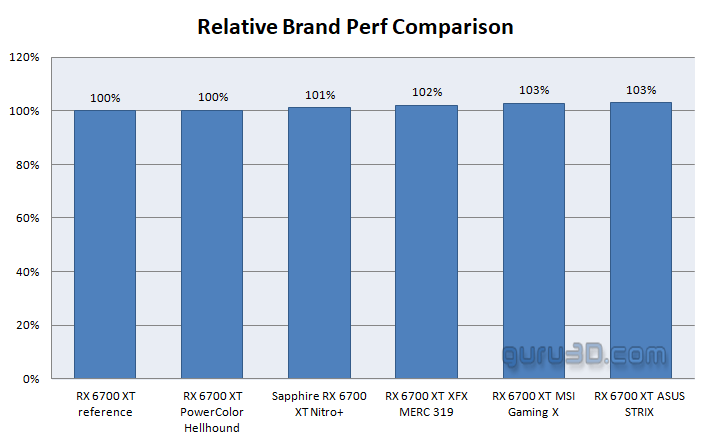Final words and conclusion
Final words
Sapphire has built a really terrific product here. The baseline performance is just 1%, maybe 2% faster compared to a reference. However, the cooling performance is good, while the card remains absolutely silent. This goes for both performance and silent BIOS modes. So in that regard, the silent BIOS mode is a little redundant. Overall it's a nice-looking product as well, although personally, I feel the silver elements on the cooler would have looked a notch nicer when it would have been an all-dark design.
Overall the Radeon RX 6700 XT is a lovely little card in that WQHD (2560x1440) resolution domain for gaming; however expensive. We've seen price hikes in the past two years where mainstream series graphics cards have been repositioned as high-end ones, with accompanying price levels. NVIDIA has started that trend, and where AMD always had a little more value to offer this year, that tide has turned. It might be so that the reference RX 6700 XT sits close to RTX 3060 Ti and sometimes 3070 performance, but only in shading performance. Raw Raytracing performance is a notch slower than the competition offers. We can also not apprehend that AMD still has not implemented any form of machine learning super-sampling dedicated in hardware, much like NVIDIA offers Tensor cores. For these two reasons (RT perf and lacking MLAA), we cast doubt on why AMD is trying to justify that starting price of 479 USD. The true competitor here is the RTX 3060 Ti with its 399 USD MSRP. We want to remind AMD that NVIDIA introduced its Tensor cores back in the summer of 2018, yet still has no to that technology answer implemented. You can also argue that while the Infinity cache works most of the time, it's designed to be a workaround to fill an imperfection in the choice of a more affordable memory type (GDDR6 opposed to GDDR6X), the current AMD GPUs are memory bandwidth deprived, even with GDDR6 at 16 Gbps, but more so due to the 192-bit wide memory bus. And that's going to bite this product in the ass every time you get GPU limited, or the L3 cache runs out and gets fewer hits.
So what am I trying to say here? Of course, AMD can opt for a different route in architecture, even with valid reasoning. They dismiss MLSS/DLSS, the somewhat dim Raytracing performance, and then limited memory bandwidth. Really that's fine up to a certain point. But what you then as a company cannot do is to price hike your product like that. Performance overall from the rasterizer/shading point of view in that WQHD domain is absolutely lovely, make no mistake .. but that starting price of 479 USD for a graphics card aimed at the WQHD resolution domain is the biggest obstacle this range will face.
Smart Acces memory
A recent ability that AMD made available and a trick that is now passing onwards to intel and NVIDIA as well is SAM. Smart Access memory can boost your framerates a bit further, sometimes significantly, sometimes a little, sometimes not at all. SAM requires that CSM Support is turned off in the BIOS in order to enable the above 4G Decode, which will allow Resizable Bar Support (SAM) to be enabled. The problem here is that if your Windows installation is configured as non-UEFI, Windows will be unable to boot from your currently installed SSD/HDD. Most PCs will be configured like that. The only solution is to disable CSM and reinstall Windows 10 to get this feature-set supported or perform some really advanced trickery. That said, SAM is not yet 100% stable, especially swapping out cards with another one (some we as reviewers do a lot), which can end up in black screens. The only solution then is the clear CMOS and start configuring from scratch. Also, from an editor/reviewer point of view where an objective equal playing field is mandatory, one question keeps popping up in my head; is it really fair to compare some products with the technology-enabled and others disabled? We're still fighting that dilemma a bit.
Performance spread reference and AIBs
We've been quite busy the past week or so as we have lined up six Radeon RX 6700 XT reviews, actually seven, but we're still awaiting a Gigabyte sample. So from top to bottom, the differences certainly are not huge, have a peek:
So the chart above is somewhat arbitrary because results can differ a single % here and there, less so in fillrate limited situation, more so in GPU bound situations. But from reference to the fastest AIB cards, you're looking at 2 to maybe 3% differentials (depending on game and resolution). So you need to weigh in if the additional percental increase is worth an even more steep price premium.
Cooling & acoustic
SAPPHIRE has an excellent performing cooling design. Expect 65 up-to 70 Degrees C game load ranges depending on the internal airflow inside your chassis. Acoustics wise the product remains silent, reaching the 33~34 DBa marker depending on BIOS preference. Sapphire should be very pleased about that as a result. FLIR imaging shows the card is hardly bleeding heat. Overall, we're very content with what we observed.
Energy consumption
Heat output and energy consumption are closely related to each other, as (graphics) processors and heat can be perceived as a 1:1 state; 250 Watts in energy consumption approaches close to 250 Watts in heat as output. This is the basis of TDP. AMD is listing the card at 230W, which is okay at best for a graphics card in the year 2021. We measure the card's entire power consumption (default performance mode) spot on close in at 225 Watt with minor spikes towards 250W. Idle power consumption sits at 11 Watts (TBP - total board power).
Coil whine
Compared to the reference Radeon RX 6700 XT, the card exhibit far less coil squeal. It's at a level you can hardly hear it. In a closed chassis, that noise would fade away in the background. However, with an open chassis, you can hear coil whine/squeal. Graphics cards all make this in some form, especially at higher framerates; this can be perceived.
Pricing
Worrying. The MSRP for the product as tested is set at 579 USD. That's a lot of money for a product sitting in the WQHD arena.
Tweaking
The Radeon RX 6700 XT series is limited to that 192-bit wide memory bus. It thus likes more memory bandwidth. You can add it by dialing up the memory frequency towards 17.2 Gbps, AMD enforces limits on the memory subsystem, limiting your GDDR6 memory that maximum overclock. We don't like that as we feel we could have gone a notch further. The clock frequency reach is spectacular; after selecting 2900 MHz, the GPU was settling at 2750~2775 MHz; due to the power limiters, you'll have gained an elegant 7% additional performance.
Conclusion
As everybody noticed, here at Guru3D, we are increasingly concerned about graphics cards' price levels. Each year a new bar is set higher; we're struggling with that as a given in our articles. The NITRO+ is not any different in that respect; 579 USD as an MSRP for a product operation on the WQHD range, for us, is too much. But hey, at least Sapphire was willing to share an MSRP as the vast majority of AIBs did not even want to give out a price for the products they sell. It is what it is, though. Sapphire did it right with the NITRO+ from a hardware and configuration point of view. It's not a Christmas tree with blinking lights. It runs under temperature in the 65 up-to maybe 70 Degrees C domain yet remains totally silent. The aesthetics are very pleasing; I would, however, like to see a more dark version. That ingredient creates a product that comes factory tweaked; however, that means it's maybe 2% faster than reference. You'll retrieve an admirable performing product in that WQHD range at very satisfactory temperatures and acoustic levels. Overall it's a lovely Full HD, and Quad HD card with abilities at Ultra HD as well. Raytracing performance on this generation RDNA2 cards are mediocre, and of course, AMD could really use something DLSS. the 12 GB memory is nice. The 192-bit wide memory bus, however narrow. The added L3 cache is bypassing the bulk of that challenge, and that works up-to 2560x1440 indeed; however, the L3 cache will always be a bypass, a limitation even as with future more GPU bound games, you're prone to run out of that cache and get a full penalty of that 192-bit wide memory bus. For this willing to shell out such an amount of money for this product range, recommended. Sapphire did it right; the big conundrum, however, remains pricing and the current state of availability.
Sign up to receive a notification when we publish a new article.
Or go back to Guru3D's front page
- Hilbert, LOAD"*",8,1.



